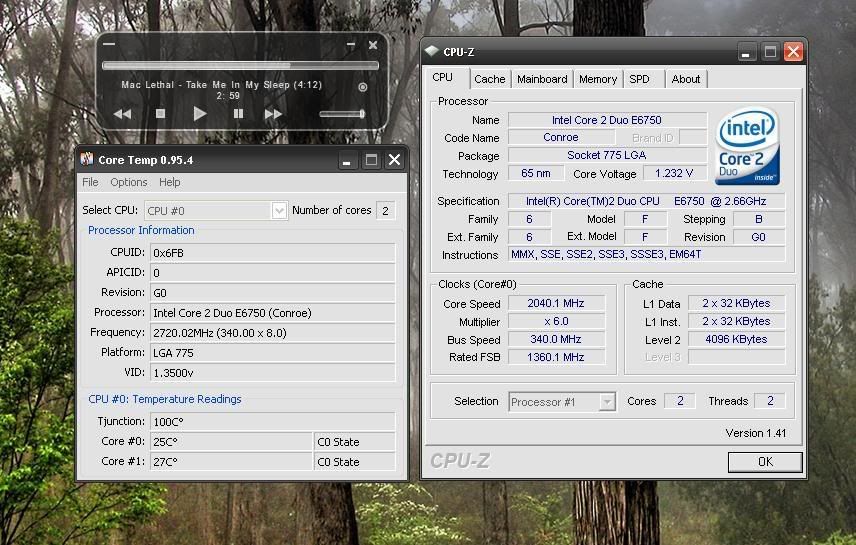WhiteZero
2[H]4U
- Joined
- Oct 21, 2004
- Messages
- 3,638
I decided to send Thermalright an email concerning some of the issues with the widly popular Ultra-120 Extreme.
I'll be sure to update this thread with any future EMails.
My EMail to them:
Thermalright's Reply (which was very speedy and on the weekend no less!):
Great, non-automated response. Very cool. To which I've replied:
Thermalright's responce:
-----------------------------------------------------------------------------------------------------------------------------------------------------------------
My next EMail:
Reply:
I'll be sure to update this thread with any future EMails.
My EMail to them:
I'm very interested in your Ultra-120 Extreme product. My concern, though, is that pretty much everyone I've heard of getting this heatsink says that the base of it, where the heatsink meets the CPU, is never very flat. Many people are displeased with the current build quality of the Ultra-120 Extreme and usually have to manually lap the surface so it's flat.
I'd like to know if Thermalright is actively doing anything to improve the build quality of this otherwise top-tier cooler? The competition (Thermaltake, Zalman, etc) dont seem to have nearly as big of a problem with this issue. And surely Thermalright's reputation could only improve in the enthusiast market if you were to work on your build quality of these heatsinks.
Thank you for your time!
-"WhiteZero"
-[H]ardForum Member
Thermalright's Reply (which was very speedy and on the weekend no less!):
Hi,
Thermalright has stated and continue to state that the design of the base is meant to be convex, because the heat spreaders on most Intel CPU's is concave, thus matching both at the most important point. The only other company that does this is Swiftech on a few of their CPU water blocks, but they also use a seal around the block that tends to hide this fact.
People are used to the old days when cooler bottoms had to be flat and polished because the application was directly on the core of the CPU, but that is no longer the case today, due to the use of heat spreaders, but most people resist change and still want it the way it was.
As I look at just about every heatsink that hits the market, none of them, at least those that end-users get, consistently match the quality of Thermalright products, but you would expect me to say that, so look for yourself.
Now the real problem that's bothers people is that you can move the heatsink once it is installed and until now that has never been the case, but Thermalright will soon have an accessory that will act as the seal on the Swiftech water block, preventing the ability to move the installed heatsink.
Your own site had this review posted http://enthusiast.hardocp.com/article.html?art=MTQwMiwxMSwsaGVudGh1c2lhc3Q=
Thermalright Support,
Bob
Great, non-automated response. Very cool. To which I've replied:
Thank you for the quick and personalized response, Bob. I appreciate it greatly, considering I work for a company that responds to emails mainly with canned responses.
I do see the logic behind Thermalrights reason for having the base of the heatsink to be convex. However, in practice, it seems to have been proven that when one laps the base of the heatsink, you seem to get better results, as seen in the following popular example: http://www.hardforum.com/showthread.php?t=1188093
I suppose this could just be a fluke since this users considerable temperature drop occurred when he laped the CPU's heat spreader after the heatsink. But his 2C drop in temperature is quite noticeable. However, I guess I shouldn't argue too much with Thermalright's designers, they probably have a better grasp on thermal dynamics than I do.
I'm also very very pleased to hear that Thermalright is working to fix the flimsy mount of the Ultra-120 Ex. That was one of the main things that was scaring me away from that product.
Again, thank you for your personal attention to this matter. The community as a whole appreciates it.
-"WhiteZero"
-[H]ardForum Member
Thermalright's responce:
Hi, WhiteZero,
All our tests showed negative results, that is if we didn't lap the heat spreader as well. Lapping both did show anywhere from .5 to 2C improvement and that had allot to do with the systems the both of them were running in. housekeeping, non-disrupted airflow and ambient air temp had as much bearing as the lapping did, in other words, with good case housekeeping, good to better than average airflow and ambient air temp of no more than say 24C, I was able to achieve the same type of improvement without lapping.
As I said earlier and with lapping of both heatsink and CPU, the user was able to nullify the movement of the heatsink, which I'm sure made him feel better and could have been something that added to his success. Now the devise our engineers have come up with will nullify the movement and I'm sure that once it hits the streets many will be claiming improved performance.
I should have a few samples early this week to test on my new rig, it should be interesting, to say the least!!
Thermalright Support,
Bob
-----------------------------------------------------------------------------------------------------------------------------------------------------------------
My next EMail:
Can you comment on whether or not this new accessory for the mounting will come with standard with new shipments of the Ultra-120 Ex. or will it only be available for separate purchase?
Thanks!
-"WhiteZero"
-[H]ardForum Member
Reply:
Hi WhiteZero,
That I can't tell you at this time because I simply don't know.
Thermalright Support,
Bob
![[H]ard|Forum](/styles/hardforum/xenforo/logo_dark.png)

